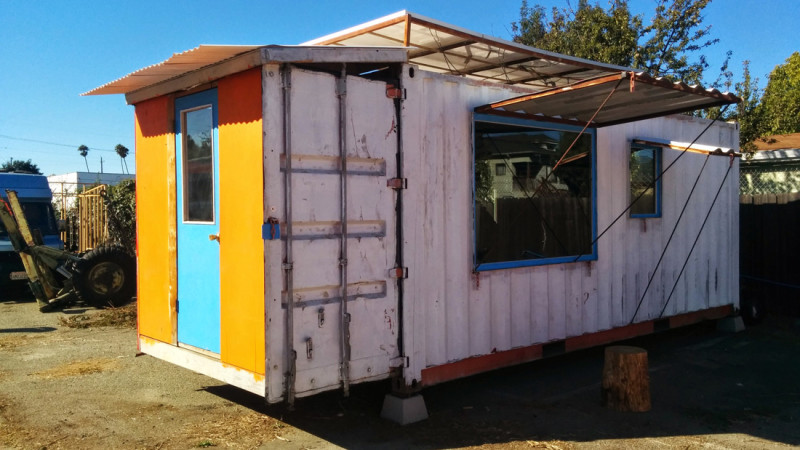You don’t see a lot of homesteading in the Bay Area these days, but it’s happening right under our noses. It’s simply not very noticeable because the houses are tiny, and many of them don’t look much like houses.
Chances are you’re probably already familiar with the tiny-house movement. It made its first big splash in the Bay Area many years ago, when Tumbleweed Tiny House Company set up shop in Sonoma County and started producing smaller versions of traditional homes, as small as 160 square feet, in an artistic, whimsical venture. Almost two decades later, you can now walk into any IKEA store and pick out a floor plan for a tiny home, which the company will ship to you — no assembly required.
Of course, ordering a tiny house is expensive (the IKEA model costs more than $80,000), and at 745 square feet, some would argue it hardly qualifies as “tiny.” A DIY tiny house could be cheaper, but the skills required for that kind of project are outside the expertise of your average layman.
This is where Luke Iseman and Heather Stewart see their opportunity to change up the tiny-house game. The pair operates an Oakland-based company called Boxouse, which shows people how to create relatively cheap, functional tiny homes and work studios out of disused shipping containers. (Iseman and Stewart demonstrate their brand of DIY homebuilding at the 10th annual Maker Faire, which runs May 16 and 17 in San Mateo.)

Iseman and Stewart keep their tiny homes simple; after all, the basic frame for the house is a shipping container. Although living in a 160 square-foot metal box may not sound as comfortable (or original) as settling into a miniature Queen Anne Victorian, it shaves off a huge amount of labor, time and money.


